The Month of Our Blessed Lady
May 2, 2015 by Peter Howard
May is one of my favorite months. The budding of new flowers, longer periods of daylight, the warmth of Spring and the joy of singing the Regina Caeli. All very welcome, especially when one lives in the mountains. But there is one very special reason I love the month of May. It is the month of Mary, who gives all those characteristics of Spring a deeper significance. Speaking for those of us in the northern hemisphere, the month of May signals the end of winter, increased sunlight and the budding of flowers – all representing signs of new life! And this is precisely what Mary does in God’s plan. As May is the advent of the increasing light and warmth of the sun which brings about new life, so is Mary the Advent of the life-giving light and warmth of the Son.
Many may be fascinated to know that Blessed Paul VI dedicated an encyclical letter, Mense Maio (“The Month of May”), entirely to the significance of the pious observance of May as a special Marian month. As if Pope Paul VI didn’t already have enough on his plate during the closing months of an ecumenical council in 1965, he was moved by the Holy Spirit to draw the Church’s reflection to the significance of Mary’s powerful mediatory role in history. And he did this for one reason only . . . that the Church might cry out for it at a tumultuous time in history.
While it would be worthwhile to simply copy and paste the entire encyclical into this article, I would like to highlight a few of the key themes of this encyclical in order that we, too, may increase in our understanding and gratitude that God has given the Church a most powerful Mediatrix to bring the world back to Christ. This encyclical is simple, insightful, inspiring and theologically brilliant.
In the beginning of Mense Maio [paragraph numbers reflect those of the encyclical], Blessed Paul VI states the significance of the Marian month of May and Mary as the Mediatrix of God’s grace and mercy:
[T]his is the month during which Christians, in their churches and their homes, offer the Virgin Mother more fervent and loving acts of homage and veneration; and it is the month in which a greater abundance of God’s merciful gifts comes down to us from our Mother’s throne.
Do these last words of Paul VI not have special significance to us as Pope Francis is moved to declare a Jubilee Year of Mercy? We see from this Blessed of the Church the explicit connection between God’s plan of mercy and His Blessed Mother. The gifts God wishes to give us, He desires to do so “in greater abundance” when we ask that He give them to us through Mary (“My soul magnifies the Lord!”).
Ad Iesum per Mariam
Blessed Paul VI then summarizes a simple yet profound spiritual and theological axiom “To Jesus through Mary” that declares that all authentic Marian devotion is oriented 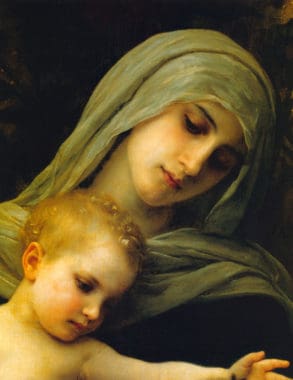
to Christ, but that the Way to Jesus is the Way He came to us . . . through Mary.
2. Since Mary is rightly to be regarded as the way by which we are led to Christ, the person who encounters Mary cannot help but encounter Christ likewise. For what other reason do we continually turn to Mary except to seek the Christ in her arms, to seek our Savior in her, through her, and with her? To Him men are to turn amid the anxieties and perils of this world, urged on by duty and driven by the compelling needs of their heart, to find a haven of salvation, a transcendent fountain of life.
Paul VI then moves on to the historical context for his encyclical on Mary that has even greater relevance to our times than it did to his:
3. Because the month of May is a powerful incentive to more frequent and fervent prayers, and because our petitions more readily find access to her compassionate heart during it, it has been a favorite custom of Our predecessors to choose this month, dedicated to Mary, for urging the Christian people to offer up public prayers whenever the needs of the Church demanded it or some grave crisis threatened the human race. This year . . . we in turn feel compelled to call for such prayers from the whole Catholic world. Looking at the present needs of the Church and the status of world peace, We have sound reasons to believe that the present hour is especially grave and that a plea for concerted prayer on the part of all Christians is a matter of top priority.
Pope Paul VI later goes on to speak of another reason for his appeal to draw close to Mary during the month of May when he stated:
6. [O]ur appeal stems from the present state of international affairs, which, as you well know . . . is extremely troubled and uncertain. The supreme benefit of peace is again being placed in jeopardy. Today we see tensions worsening gravely between nations in certain parts of the world, as if no lesson had been learned from the bitter experiences of the two world wars which caused so much bloodletting in the first half of this century. Once again we see men risking recourse to arms instead of negotiating to settle disputes between opposing viewpoints. Thus the inhabitants of entire nations are subjected to unspeakable sufferings occasioned by uprisings, secret and treacherous warfare, and outright battles. These activities grow more frequent and more bitter each day, and could at any time spark a new and terrible war.
8. In this pitiful state of affairs, we sadly note that there is very often no respect for the sacred and inviolable character of human life; that actions and methods are employed which openly flaunt the moral sensibilities and customs of civilized people.
Wait, when was this encyclical written? One would think it could have been written last week. Just insert the latest threats such as ISIS, war in the Ukraine, genocide in Africa, attacks against the family, the unborn, etc., and you have an updated appeal for our times. Blessed Paul VI was a realist and a prophet. He understood well that one cannot understand and appreciate the extreme nature of a remedy unless we understand the seriousness of the sickness. And so, Paul VI paints a real and dire picture of where society is at in Mense Maio that applies even more so to us in 2015.
What is the remedy to our present day crisis of peace and respect for the dignity of the human person? Fly to Mary, the Mediatrix of Peace! Paul VI writes:
10. But peace . . . is not solely the work of man. It is also, and primarily, a gift from God. Peace comes from heaven. It will truly reign among men when we have finally proved ourselves worthy to receive this gift from Almighty God. Just as the happiness and destiny of nations are in His power, so also are the hearts of men. And so we shall obtain this lofty benefit by praying to God; by praying with constancy and watchfulness, as the Church has been wont to do from her very beginning; by praying, in particular, for the intercession and protection of the Blessed Virgin Mary, who is the Queen of Peace.
Mary as our most loving Mother, is indeed close to each and every one of us—especially the suffering. Let us see that this May is a call from our spiritual Mother to place all of our confidence in her, as Blessed Paul VI exhorts us in these difficult times. In light of the upcoming Jubilee Year of Mercy, let us embrace the following closing words of Paul VI that fittingly close this reflection and leave us with great hope:
11. [T]hroughout this month of May, let us offer our pleas to the Mother of God with greater devotion and confidence, so that we may obtain her favor and her blessings. Even if the grave sins of men provoke God’s justice and merit His just punishments, we must not forget the he is “the Father of mercies and the God of all comfort” [2 Cor 1:3], that He has appointed Mary most holy as the generous steward of His merciful gifts.
12. May she who experienced the cares and hardships of earthly life, the weariness of daily toil, the hardships and trials of poverty, and the sorrows of Calvary, come to aid the needs of the Church and the human race. May she graciously lend an ear to the devout pleas of those all over the world who beg her for peace. May she enlighten the minds of those who rule nations. And finally, may she prevail on God, who rules the winds and storms, to calm the tempests in men’s warring hearts and grant us peace in our day. What we seek is true peace grounded on the sturdy foundations of justice and love—on a justice which recognizes the legitimate rights of the weak as well as those of the strong; on a love which keeps men from falling into error through excessive concern for their own interests.
Thus each person’s rights may be  safeguarded without the rights of others being forgotten or violated.
safeguarded without the rights of others being forgotten or violated.
Where do we start? Pray the Holy Rosary each day! More on that next week!
Mary Our Merciful Mother, Queen of Peace, PRAY FOR US!
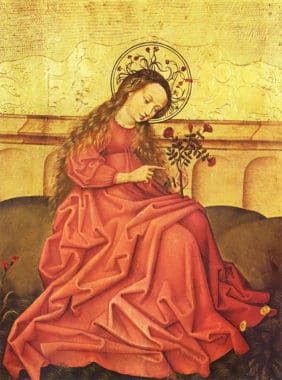
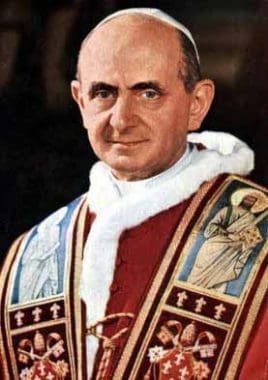
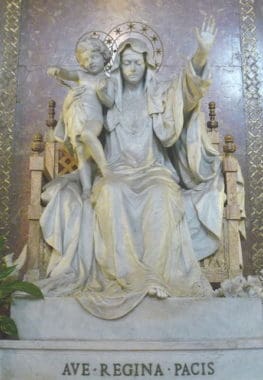
![MurilloBartolomeEstebanTheMadonnaoftheRosary[Mary,Christ,Jesus]GoogleArtProjectCrop](http://www.spiritualdirection.com/wp-content/uploads/2013/09/MurilloBartolomeEstebanTheMadonnaoftheRosaryGoogleArtProjectCrop-150x150.jpg)
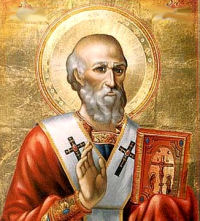
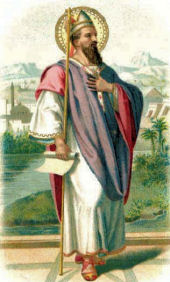 A champion of orthodoxy! He did not die a martyr, but his life was martyrdom in the truest sense. Athanasius was the Church's greatest hero in the battle against Arianism (a heresy that denied Christ's divinity). Even as a young deacon at the Council of Nicea (325), he was recognized as "Arius' ablest enemy" and the foremost defender of the Church's faith. After the death of his bishop (328), "the entire Catholic congregation with one accord, as one soul and body, voiced the wish of the dying bishop Alexander that Athanasius should succeed him. Everyone esteemed him as a virtuous, holy man, an ascetic, a true bishop."
A champion of orthodoxy! He did not die a martyr, but his life was martyrdom in the truest sense. Athanasius was the Church's greatest hero in the battle against Arianism (a heresy that denied Christ's divinity). Even as a young deacon at the Council of Nicea (325), he was recognized as "Arius' ablest enemy" and the foremost defender of the Church's faith. After the death of his bishop (328), "the entire Catholic congregation with one accord, as one soul and body, voiced the wish of the dying bishop Alexander that Athanasius should succeed him. Everyone esteemed him as a virtuous, holy man, an ascetic, a true bishop."